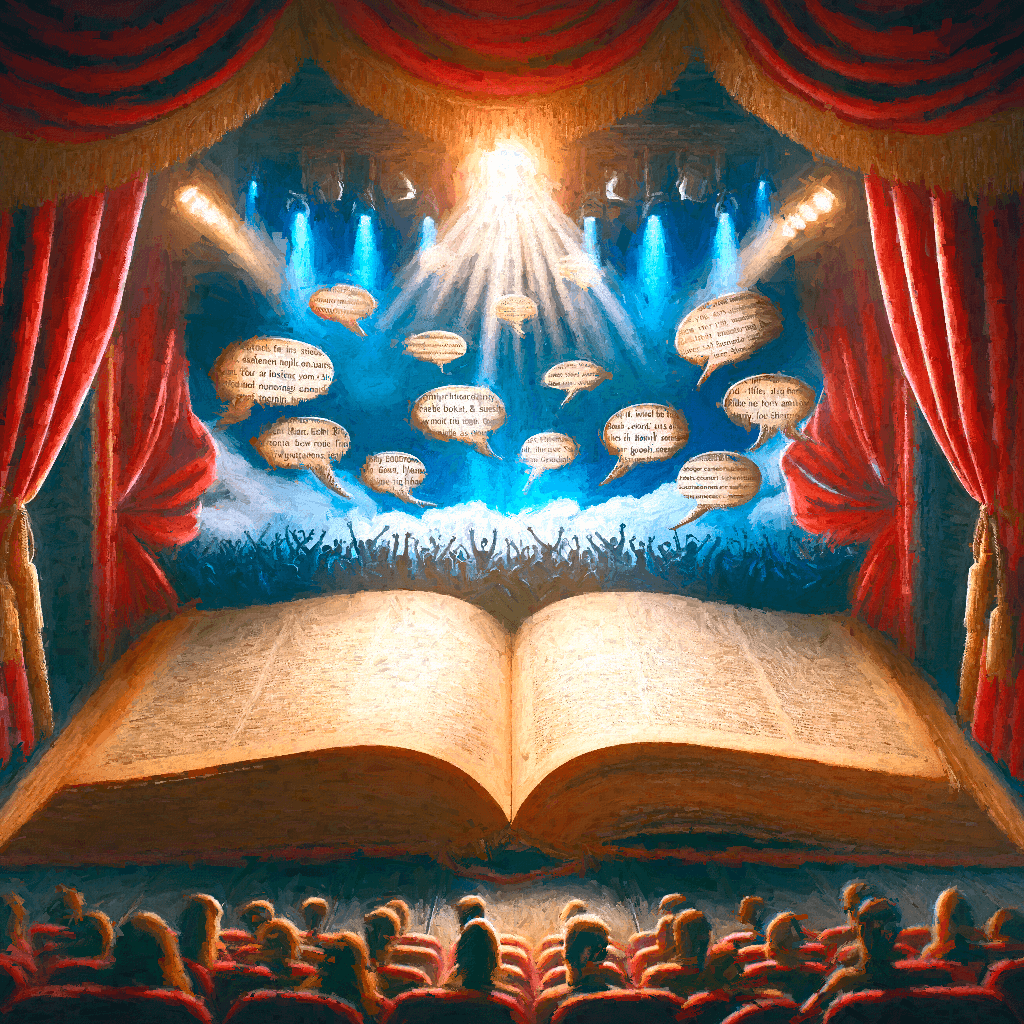Dialogue Writing Tips: Crafting Natural, Impactful Dialogue that Drives the Story Forward

Crafting dialogue that feels both natural and impactful is an art form essential to the storytelling process. It breathes life into characters, shapes the narrative, and can elevate a story from good to unforgettable. Through exploring insights from seasoned writers and industry experts, this guide aims to equip aspiring writers with the tools needed to create dialogue that resonates and enriches their storytelling.
Crafting Impactful Dialogue
Listen to the World Around You: Great writers are also great listeners. Observe real-life conversations, noting how people interrupt each other, the colloquialisms they use, and how silence can speak volumes. This doesn’t mean transcribing real conversations verbatim—they often need tightening and refining—but real speech patterns provide a solid foundation for natural dialogue. Greta Gerwig, director and writer of "Lady Bird" and "Little Women," advocates for listening to real conversations as a source of inspiration. "I spend a lot of time listening to how people talk, noting the rhythms and the choice of words. Real speech is often messy, and capturing that can make your characters feel alive,"
Character Voices Should Differ: Each character should have a distinct voice, reflective of their background, personality, and current emotional state. Joss Whedon, known for his character-driven scripts, advises, "Know your characters so well that you can hear their different voices in your head. That's when their dialogue will flow naturally." "I think about where a character comes from, their education, and their world view. All these factors influence how they express themselves," mentions Lin-Manuel Miranda, discussing character development in "Hamilton." Quentin Tarantino, whose films are as celebrated for their conversations as for their visual style, shares a similar sentiment. "When I write dialogue, it's about getting to know my characters. I let them speak to discover who they are. Their voices have to be distinct enough that you could identify them by their lines alone," Tarantino notes in an interview with The Guardian.
Subtext is Hot: Not everything needs to be said outright. And isn’t it what makes Jane Austin and other old-centuries romance so still on-demand? David Mamet famously critiqued exposition-heavy dialogue, encouraging writers to trust their audience and leave space for interpretation. "The audience will do half the work for you," Mamet suggests. "Let them." "On-the-nose" dialogue—where characters say exactly what they think or feel—can rob scenes of subtlety. Instead, as Sofia Coppola advises, "Let the audience do some of the work. Imply more than you show in speech. It makes for a richer story."
Impactful Dialogue that Drives the Story Forward
Dialogue Should Reveal or Change: Every piece of dialogue should reveal something new about the character or change their situation. "If a line doesn’t reveal character or advance the plot, cut it," advises Greta Gerwig. This ensures that every conversation serves the narrative, moving the story forward with purpose. As legendary screenwriter Billy Wilder once said, "If a line of dialogue doesn't serve the story's progress, it's the first thing you should cut." This principle ensures that conversations always contribute to the narrative's momentum.
Conflict and Desire: Conflict is not just for action scenes; it's also crucial in dialogue. Rian Johnson, writer-director of "Knives Out," illustrates, "Dialogue is most thrilling when it's a form of combat. Characters should use their words as weapons, each line a move in their strategy to get what they want." It isn't just about characters talking to each other; it's about communication and the myriad ways it can unfold. Aaron Sorkin, renowned for his sharp, fast-paced dialogue, emphasizes the importance of intention and obstacle in every conversation. "A great dialogue is an argument," Sorkin says. "Each character wants something, and that something is obstructed by another force. This conflict is what makes dialogue sparkle." As mentioned by George R.R. Martin, "The heart of drama is conflict. Characters should have objectives, desires, and that inevitable clash when desires contradict or oppose." This conflict propels the story, heightening stakes and deepening investment in the outcome.
Brevity and Wit: Oscar Wilde, celebrated for his razor-sharp wit, demonstrated that dialogue benefits from brevity and cleverness. "Brevity is the soul of wit," Wilde wrote, reminding writers that sometimes, less is more, and a single, well-crafted line can carry more impact than a lengthy monologue.
Practicing and Refining Your Dialogue
Read Your Dialogue Out Loud: This is perhaps the simplest yet most effective way to gauge the natural flow of your dialogue. If it sounds stilted or awkward when spoken, it likely needs revision. As Toni Morrison once advised young writers, "If it sounds like writing, rewrite it."
Workshop Your Dialogue: Engage with writing groups or workshops where you can receive feedback on your dialogue. Hearing others read your lines can offer invaluable insights into clarity, pacing, and authenticity.
Study Films and Plays: Films and plays, mediums where dialogue often takes center stage, are excellent resources for learning. Analyze scenes with notable dialogue for structure, pacing, and character development. As Martin Scorsese once said, "Cinema is a matter of what's in the frame and what's out. The same is true for dialogue."
Keep Evolving: Writing dialogue is a skill that improves with practice and patience. Be open to criticism, willing to learn, and never stop refining your craft. As Maya Angelou eloquently put it, "You can only become truly accomplished at something you love. Pursue it, study, get criticized, and keep growing."
Crafting dialogue that rings true while propelling the story forward is a challenge that requires patience, observation, and a deep understanding of your characters. By incorporating these tips and continuously refining your craft, you can create dialogue that not only sounds natural but also enriches your narrative, engaging your audience in the vibrant, complex world you've created.